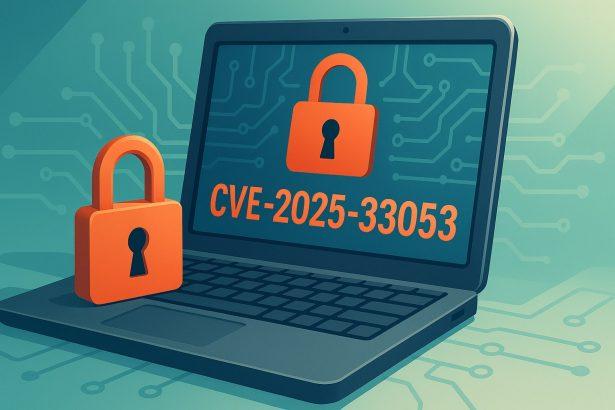A newly discovered critical vulnerability—CVE-2025-33053—targets Microsoft’s WebDAV protocol and has already been leveraged in sophisticated cyber-attacks. This zero-day flaw enables attackers to execute code remotely without needing user credentials. The exploit impacts systems where WebDAV is enabled and has been actively used in advanced persistent threat (APT) campaigns to deploy spying tools.
The issue lies in how WebDAV handles file paths. Attackers can use specially crafted .url shortcut files to trick systems into launching malicious code from external WebDAV servers. This zero-day has been weaponized in live attacks, notably by the espionage-focused Stealth Falcon group.
Threat Profile
| Attribute | Details |
|---|---|
| Threat Type | Zero-Day Remote Code Execution (RCE) |
| Detection Names | CVE-2025-33053 |
| Symptoms of Infection | Unusual processes triggered by .url files, abnormal system behavior, communications with external WebDAV servers |
| Damage & Spread | Used to drop spyware payloads like the Horus Agent through malicious email attachments; bypasses traditional security software |
| Danger Level | High — actively exploited in targeted attacks |
| Removal Tool | SpyHunter: Download Here |
Deep Dive: How the Exploit Works
How Infections Occur
Victims are lured into opening email attachments appearing to be PDFs. In reality, they’re .url shortcut files pointing to remote content hosted on attacker-controlled WebDAV servers. Once clicked, the system uses built-in utilities to fetch and execute remote scripts, launching the malicious payload.
What Happens Next
The primary malware delivered is the Horus Loader, which then installs the Horus Agent, a stealthy espionage tool. This spyware is capable of:
- Harvesting sensitive documents
- Monitoring user activity
- Performing remote shell commands
- Logging keystrokes without detection
The entire process is designed to evade endpoint defenses and maintain persistent access without user awareness.
Why This Is Dangerous
This exploit abuses trusted system functions (WebDAV and Windows utilities), making it hard to detect. Because it requires no user credentials and operates through seemingly legitimate channels, it can silently compromise both personal and enterprise networks.
Exploit Sample Content
There is no ransom note or phishing text included in this particular attack; it’s a zero-day vulnerability exploit used for cyber-espionage.
Final Thoughts
CVE-2025-33053 represents a serious threat to both individual users and organizations, especially those in defense or government sectors. Its stealthy deployment method and zero-day nature make it particularly insidious. Microsoft has released a patch as part of its June 2025 updates—install it immediately if you haven’t already. For added protection, scan your system using SpyHunter to detect and eliminate any lingering threats linked to this exploit.




